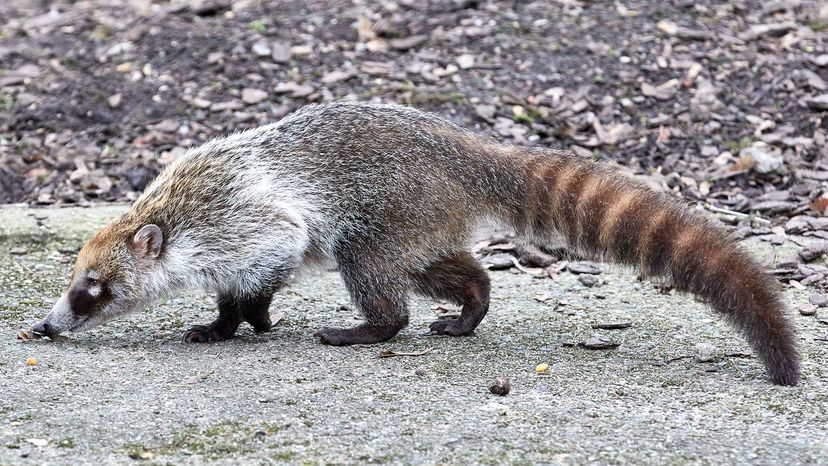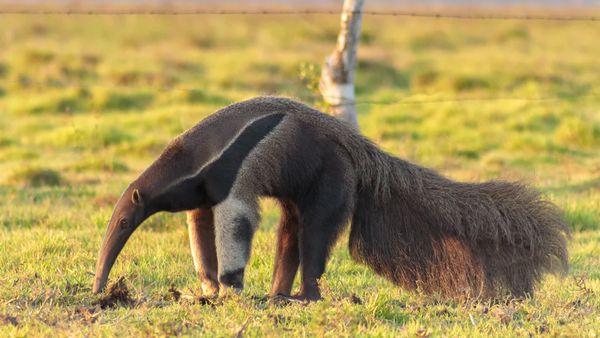
There are lots of cute animals out there that you probably want to hug, or even keep as a pet. The coatimundi, also called the coati, is one of these animals — so adorable! Definitely not pet material, though. Why? There are a lot of reasons, but the main reason is that they're real busybodies, and not stupid at all.
Coatis are extremely social mammals native to Central and South America, and belong to the same family as raccoons and kinkajous. The females are about the size of a housecat, though the males can be almost twice as big, and they have thick, luxurious fur and long, upturned snouts. Their tails are long and stick straight up in the air, so even if you can't see the coati's low-slung body moving through the grass, you might get a peek at the tip of its tail poking up. They're active during the day, spending their time hunting for food and maintaining their territories.
Advertisement
The name coati is not actually short for coatimundi — "coati" comes from a native language from Brazil meaning "belt nose," due to their habit of sleeping with their noses tucked into their bellies.
Adult males are solitary, while adult females and their young form large bands. Biologists originally described the larger, lone males as a separate species because their bodies and habits appeared so different from those of the females.
Advertisement


